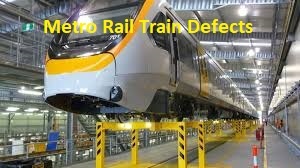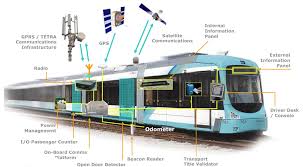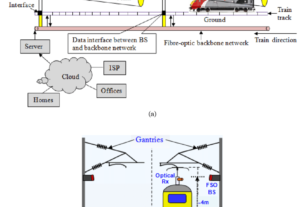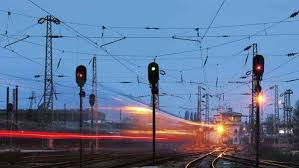Metro Rail Train Defects
Train Defects (1) No train with defective safety equipments, cab signaling, leading cab controls, interior lighting, ventilation, brakes or doors shall remain in passenger service, and it shall be removed from service at the earliest opportunity.
(2) (i) If traction power is lost on any car bogie, the train need not be withdrawn from service, if power is lost on more than one car bogie and the reduction in speed causes delay to following trains, the passengers shall be detrained at the station and the train worked empty, otherwise, the train may remain in passenger service until it can be replaced by a
serviceable train;
(ii) in the event of a mechanical defect in the traction motor or drive which causes the wheels to lock, the train shall be stopped immediately and shall not be moved until clearance has been given by a Rolling Stock Engineer;
(iii) if a Train Operator finds that the train cannot be driven or braked from the leading end cab, passengers shall be detained as per the provisions referred in clauses (iv) and (v) of this sub-rule;
(iv) such an occurrence may usually happen at a station and a terminal in which case the passengers shall be discharged at the station itself and to dispatch the train to the depot, the Station Controller shall board the train and act as look out in the leading cab while the Train Operator drives from the rear cab in Cut O ut mode Information on signals and cleared routes shall be passed by cab to cab telephone and train speed restricted to a maximum of ten kilometer per hour.
(v) In the unlikely event that the defect causes a train to stop between stations, the Traffic Controller shall arrange another Train Operator or if necessary a Station Controller competent to drive the train to reach the failed train and drive the train from rear cab in Cut Out mode with leading cab Train Operator acting as look out and the information on signals and cleared routes shall be passed by cab to cab telephone or radio and train speed restricted to a maximum of ten kilometer per hour. Alternatively, the failed Train can be rescued by assisting train or shunting vehicle as per rule 50.
(3) (i) Upon failure of any train control system, which shall be indicated on the Train Control and Monitoring System or Train Integrated Management System, whatever nomenclature given, the Train Operator shall bring the train to a complete stop, if the train can still be operated by applying suitable isolations in the train control system, the Train
Operator shall consult Traffic Controller and seek further instructions, in consultation with Rolling Stock Engineer;
(ii) when such failure of the traction control happens on a running line and renders the train inoperative even by applying appropriate isolations in the Train Control and Monitoring System or Train Integrated Management System, the T rain Op e rat o r shall inform the Traffic Controller that his train is stalled and requires assistance to move and in
this case the train shall be dealt with in accordance with rule 50. Management System panel;
(ii) If brakes on any car bogie fail to apply, the brake of that bogie shall be isolated manually and the normal service will be resumed. The train shall be withdrawn from service after completion of the trip;
(4) (i) Failure of brakes to apply or to release shall be indicated on the Train Control and Monitoring System or Train Integrated Management System panel;
(iii) In case the brakes of more than one car bogie and upto fifty percent of the train fail to apply, the train shall be worked at speed of twenty-five Kilometers per hour upto next station and passengers must be detrained at the next station and the train worked to depot at a speed not exceeding twenty-five kilometers per hour;
(iv) if brakes fail to apply on more than fifty percent of the bogies, the train shall be brought to a stop as soon as possible by application of the emergency brake and shall not proceed until authorised by a Rolling Stock Engineer;
(v) if brakes fail to release on any car bogie, up to a maximum of fifty percent the brakes shall be isolated on the affected cars; the brakes released by local control; passengers shall be detrained at the next station and, the
train worked to depot at a speed not exceeding twenty-five kilometer per hour;
(vi) if brakes fail to release on more than fifty percent of the cars, no attempt shall be made to move the train until authorised by a Rolling Stock Engineer.
(5) (i) If doors on a train are not closed, the train shall not start from a station;
(ii) If doors cannot be closed by command or manually or there is no obviously open door and the “Doors Closed” indication is still not received, passengers shall be detrained and the train shall be worked empty until it can receive attention from the Rolling Stock maintenance department;
(iii) If some doors of train do not open at stations but after closing the doors all doors are indicated as closed, the train may remain in passenger service, and necessary announcement shall be made in the train and on the stations to inform the passengers;
(iv) In peak period, the extended dwell times at stations, that could result from some doors not opening, may make it desirable for the train to be withdrawn from service to avoid delaying the following trains.
(6) Failure of an air conditioning unit shall be indicated on the Train Control and Monitoring System or Train Integrated Management System panel and although it has no effect on the safe operation of the train the Train Operator shall report such failure to Operations Control Center, so that rake receives prompt attention to relieve
hardship to passengers.
(7) (i) Failure of main car lighting on one or two cars shall be reported by the Train Operator to the Operations Control Center and the train may continue in passenger service to the end of its trip provided the emergency lighting is working satisfactorily and at the terminal it shall be withdrawn from service or replaced by a good train;
(ii) if all main train lightings fail or main lighting and emergency lighting both fail, on the same car, passengers shall be detained at the next station and the rake withdrawn from service.



